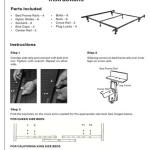When to Transition Your Child from Cot to Toddler Bed
Choosing the right time to transition a child from a cot to a toddler bed is a significant milestone. There’s no one-size-fits-all answer, and the decision depends on several factors related to the child's development, behavior, and individual needs. Rushing the transition can be disruptive, while delaying it too long can also present challenges. This article explores the key indicators that suggest a child is ready for this change and provides guidance for parents navigating this process.
Signs Your Child is Ready for a Toddler Bed
Recognizing the signs of readiness can make the transition smoother and less stressful for both parents and child. These signs can manifest physically, developmentally, or behaviorally.
* Climbing Out of the Cot: Perhaps the most obvious sign is when a child begins regularly climbing or attempting to climb out of their cot. This behavior presents a significant safety risk, as falls can lead to injuries. * Reaching the Height/Weight Limit: Most cots have specified height and weight limits. Exceeding these limits can compromise the structural integrity of the cot and potentially lead to accidents. Consulting the manufacturer's guidelines is crucial. * Showing Interest in a "Big Kid" Bed: Expressing interest in a toddler bed or wanting to sleep in a bed like older siblings or parents can be a strong indicator of readiness. * Demonstrating Independence: A child showing increasing independence in other areas, such as dressing, toileting, or playing, might also be ready for the independence a toddler bed provides. * Potty Training: For children undergoing potty training, transitioning to a toddler bed can aid in nighttime bathroom trips, fostering self-sufficiency and reducing accidents. * A New Sibling is Arriving: If a new baby is on the way and the cot is needed, transitioning the older child to a toddler bed a few months prior can help them adjust without feeling displaced by the new arrival.
When NOT to Transition to a Toddler Bed
While there are signs of readiness, there are also circumstances that suggest postponing the transition. Significant changes in the child's life can make adjusting to a new sleeping arrangement more difficult. Avoiding these periods can contribute to a more positive experience.
* During Times of Stress or Transition: Avoid transitioning during periods of significant change, such as moving homes, starting daycare, or experiencing family upheaval. * During Regression: If a child is experiencing developmental regression or clinginess, postponing the transition is advisable. A stable and familiar sleep environment can provide comfort during these phases. * Just Before a Major Event: Avoid transitioning immediately before a major event like a birthday or holiday, as the excitement might disrupt sleep patterns.
Making the Transition Smoothly
A thoughtful approach to the transition can significantly impact its success. Several strategies can help create a positive and comfortable experience for the child.
* Involve the Child in the Process: Allowing the child to participate in choosing bedding or decorating the new bed can create excitement and ownership. * Maintain Consistent Bedtime Routines: Sticking to established bedtime routines provides familiarity and reassurance during the change. Bath time, story time, and quiet activities can signal that it's time for sleep, regardless of the bed. * Create a Safe and Familiar Sleep Environment: Ensure the room is childproof and the bed is at a safe height. Familiar toys, blankets, and comforting objects can ease the transition. * Positive Reinforcement and Patience: Offer praise and encouragement for staying in the bed and adjusting well. Patience is key, as it might take several nights or even weeks for a child to fully adapt. * Establish Clear Boundaries and Expectations: Communicate clear and simple rules about staying in bed and bedtime expectations. Consistency in enforcing these boundaries helps establish a sense of security. * Consider a Gradual Transition: Some children benefit from a gradual transition. This might involve daytime naps in the toddler bed initially, followed by nighttime sleep. * Address Nighttime Wakings Calmly and Consistently: Nighttime wakings are common during the transition. Responding calmly and consistently helps reassure the child and encourages them to return to sleep independently.
Choosing the Right Toddler Bed
Selecting the appropriate toddler bed contributes to safety and comfort.
* Safety Features: Look for beds with guardrails to prevent falls, especially for active sleepers. * Size and Height: Choose a bed that's low to the ground and appropriately sized for the child's age and height. * Mattress: Select a firm and comfortable mattress specifically designed for toddler beds.
Transitioning from a cot to a toddler bed is a significant step in a child's development. Observing the child's cues, choosing the right time, and implementing supportive strategies can make this a positive milestone for both parent and child.

How To Move Your Child From Crib Toddler Bed Safely

When To Transition From A Crib Toddler Bed

When Should You Remove The Sides From Your Toddler S Cot Bed Mummy Bubble

Moving Your Child To A Cot Bed Tony Kealys

How To Move From A Cot Bed Toddler Cuckooland

Moving A Toddler From Cot To Bed The Mummy Bubble

When Should I Move My Baby Out Of A Cot Global

Top Tips For Transitioning From Cot To Bed Ergopouch

How To Move From A Cot Bed Toddler Cuckooland

Making Your Home Safe Before Moving A Child From Cot To Bed Red Nose
Related Posts







